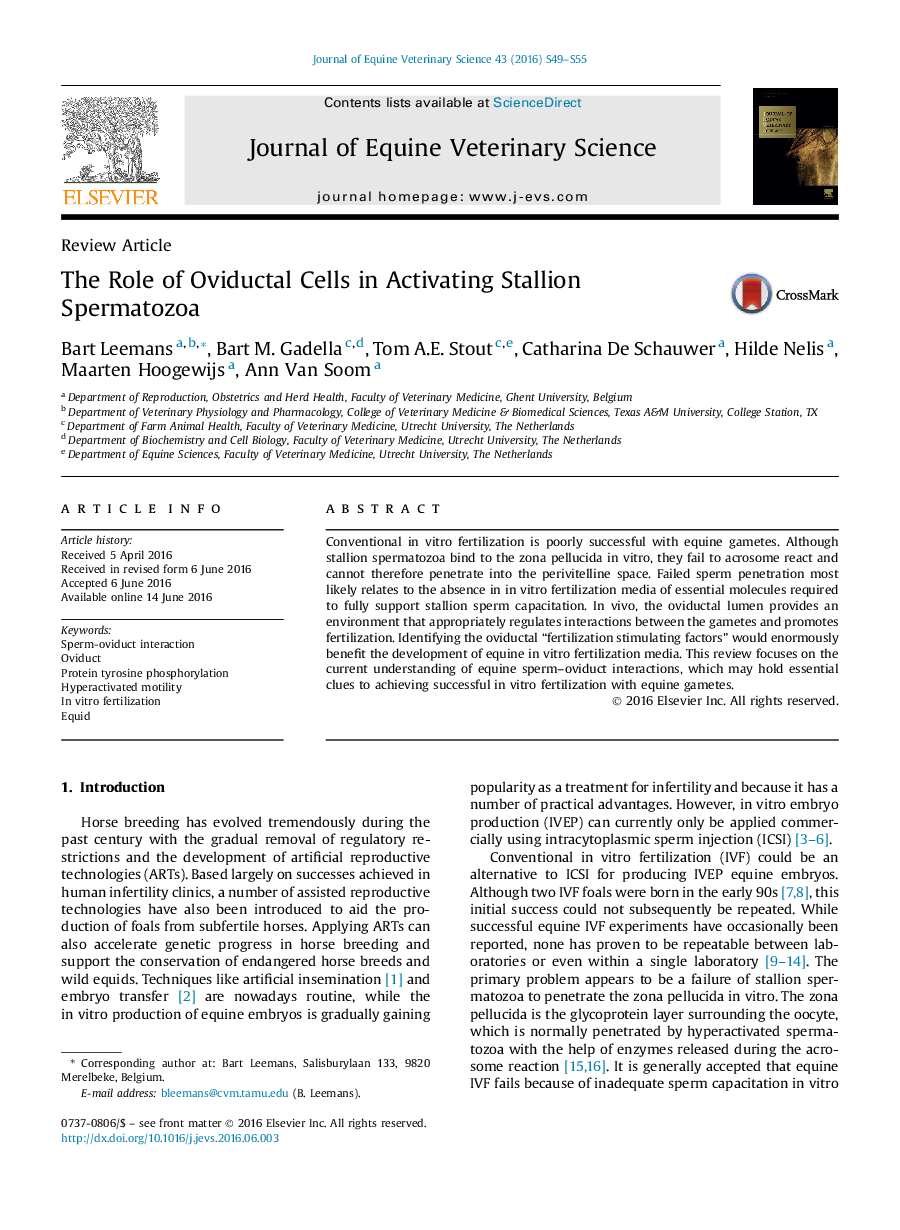| کد مقاله | کد نشریه | سال انتشار | مقاله انگلیسی | نسخه تمام متن |
|---|---|---|---|---|
| 2394358 | 1101517 | 2016 | 7 صفحه PDF | دانلود رایگان |
• Oviduct binding and elevated pH induce tyrosine phosphorylation in stallion sperm.
• An alkaline follicular fluid fraction induces capacitation in stallion sperm.
• Once capacitated, very few stallion sperm are released from the oviduct epithelium.
• Hyperactivated and tyrosine phosphorylated sperm does not facilitate equine in vitro fertilization.
• Procaine induces cytokinesis in horse oocytes via a pH-dependent mechanism.
Conventional in vitro fertilization is poorly successful with equine gametes. Although stallion spermatozoa bind to the zona pellucida in vitro, they fail to acrosome react and cannot therefore penetrate into the perivitelline space. Failed sperm penetration most likely relates to the absence in in vitro fertilization media of essential molecules required to fully support stallion sperm capacitation. In vivo, the oviductal lumen provides an environment that appropriately regulates interactions between the gametes and promotes fertilization. Identifying the oviductal “fertilization stimulating factors” would enormously benefit the development of equine in vitro fertilization media. This review focuses on the current understanding of equine sperm–oviduct interactions, which may hold essential clues to achieving successful in vitro fertilization with equine gametes.
Journal: Journal of Equine Veterinary Science - Volume 43, Supplement, August 2016, Pages S49–S55
